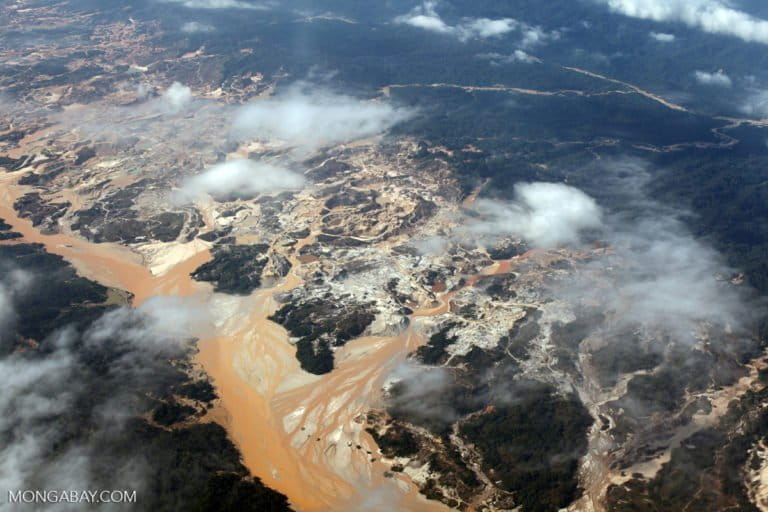- While the devices we carry around in our pockets everyday provide us with unprecedented convenience and levels of access to information, the materials they contain are often linked to the destruction of some of the planet’s richest ecosystems.
- Yet small-scale mining is an important source of income more than 40 million people worldwide, generating livelihoods and, in some cases, creating paths to escape poverty.
- For these reasons, last week a broad coalition launched a $750,000 global competition to identify ways to make small-scale and artisanal mining less damaging to communities and the environment.
- The Artisanal Mining Grand Challenge is hosted by Conservation X Labs, a Washington, DC- and Seattle-based non-profit that has organized other prize-based competitions around difficult environmental problems.
While the devices we carry around in our pockets everyday provide us with unprecedented convenience and levels of access to information, the materials they contain are often linked to the destruction of some of the planet’s richest ecosystems. Extracting metals and minerals like gold from the Amazon, coltan from the Congo, and nickel from Indonesia can take a heavy on local peoples, wildlife, rivers, and forests.

One of the most complicated aspects of addressing the issue is the disparate nature of small-scale and artisanal mining, which accounts for a significant share of production of some of the most critical materials that go into mobile phones, tablets, and laptops as well as jewelry: 15-20 percent of diamonds, 15-20 percent of gold, 20 percent of cobalt, and 70-80 percent of colored gemstones. Much of this mining is informal, unregulated, or even illegal, putting it beyond the reach of authorities. And some of the companies that sell products to consumers may have very little knowledge of what raw materials ultimately end up in their supply chains.
Yet small-scale mining is an important source of income more than 40 million people worldwide, generating livelihoods and, in some cases, creating paths to escape poverty. So outright crackdowns on the activity can have a downside.

For these reasons, last week a broad coalition launched a $750,000 global competition to identify ways to make small-scale and artisanal mining less damaging to communities and the environment. The Artisanal Mining Grand Challenge is hosted by Conservation X Labs, a Washington, DC- and Seattle-based non-profit that has organized other prize-based competitions around difficult environmental problems.
“This is a wicked problem,” said Alex Dehgan, Co-founder and CEO of Conservation X Labs. “All of the partners involved are doing this because we like to run to hard problems, rather than run away from them.”
“Our problems are scaling exponentially and our solutions have been linear. We seek to work as part of a coalition because none of us can solve it alone,” Dehgan continued. “Our only competitor should be extinction.”

The Artisanal Mining Grand Challenge is structured into three categories: preventing and remediating damage at mine sites; addressing social and environmental costs in mining supply chains beyond mine sites; and developing information solutions that measure the environmental and social impacts of mining. On top of those categories, Microsoft’s AI for Earth Initiative is awarding $100,000 “for solutions that utilize or deploy artificial intelligence (AI), including machine learning,” to the issue.
The challenge is open to anyone offering solutions. Paul Bunje, Co-founder and CSO/COO of Conservation X Labs, expects a wide range of entities — from NGOs to companies to entrepreneurs — to get involved.
“We can now use a crowd-based innovation competition, not just to incentivize new solutions and accelerate innovation – which is critical – but also use this as an opportunity to capture huge value,” Bunje said. “It’s the opportunity for all of us to be a part of something huge.”

The Artisanal Mining Grand Challenge
Correction October 9, 2019: Conservation X Labs is based in both Washington, DC and Seattle, not only Virginia as originally stated in this post.
Disclosure: Mongabay is participating in The Artisanal Mining Grand Challenge through a special reporting project on small-scale and artisanal mining worldwide. The Artisanal Mining Grand Challenge does not have any editorial influence on the stories Mongabay produces.